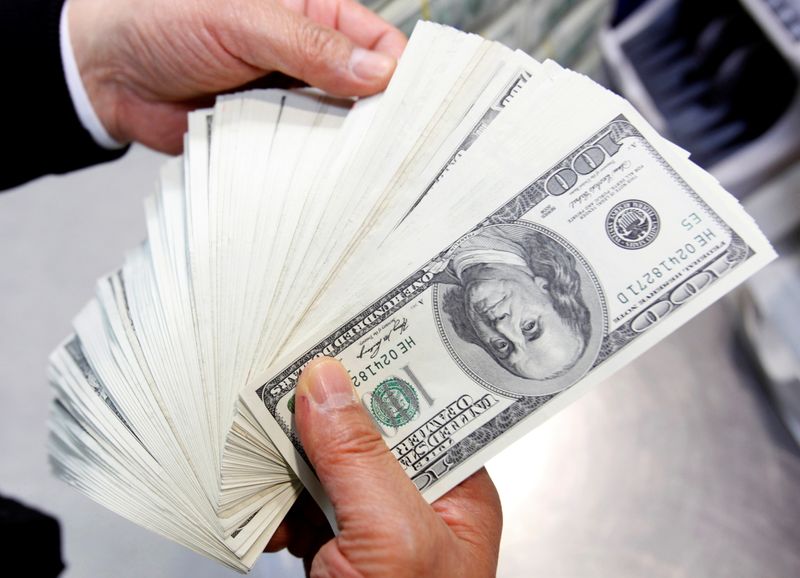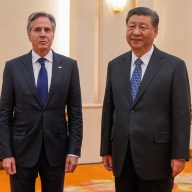BENGALURU (Reuters) – The U.S. dollar outlook is uncertain, with foreign exchange strategists in a Reuters poll almost evenly split on the greenback’s near-term direction following two months of broad weakness, as they await clearer signs from policymakers.
After a strong start to the year – rising about 4% in the first quarter – the U.S. currency has lost most of those gains since the end of March, tracking the decline in Treasury yields. It was trading near a five-month trough against a basket of major currencies on Thursday.
The Federal Reserve views the recent pick-up in inflation as transitory and reiterated its accommodative policy pledge. But pent-up demand as the economy reopens from COVID-19 shutdowns has driven expectations for robust economic growth and higher price pressures.
While currency speculators increased bets against the dollar to the highest since late February – driven by the Fed’s dovish stance – 33 of 63 analysts answering an additional question in the May 28-June 3 poll said the greenback’s weakening trend was broadly over.
“I’m really hazy on what’s going to happen for the next three months, because we could have a Fed that finally has to capitulate and deliver a firmer tapering of asset purchases message – spooking markets to a certain degree,” said John Hardy, head of FX strategy at Saxo Bank.
“We could get some volatility in markets, which tends to be a dollar support. I think the market view on the Fed is very, very complacent.”
The remaining 30 analysts said the weakening trend would continue, with views for the dollar to fall anywhere between 0.5% and 6.0% in the next three months.
While the consensus showed the greenback would be range-bound, staying within 1% of current levels in the next three months, a long-held weaker dollar view persisted for the 12-month outlook with most major currencies expected to outperform.
Those expectations echo findings of a Reuters poll of equity strategists, which showed most major stock market indexes would rise modestly this year but continue their ascent beyond mid-2022. The greenback tends to go in the opposite direction of risk assets.
It was also reflected in expectations for currencies, considered as safe bets in the latest poll.
Reuters poll graphic on major currency market outlook: https://fingfx.thomsonreuters.com/gfx/polling/xegpbraqbpq/FX%20June.PNG
The Japanese yen and the Swiss franc – which have lost 6% and 2%, respectively, so far in 2021 – were not expected to recoup those losses in a year.
Despite a strong U.S. vaccination drive and economic recovery, other developed economies are closing that gap, taking some of the sheen off dollar-denominated assets.
The euro, which has clawed back nearly all of this year’s 4% losses against the dollar in the past two months, was forecast to trade around its current level of $1.22 in six months and gain about 2% in a year to $1.24.
But the margin of that expected gain was unchanged from last month, underscoring the fading effects of the so called ‘catch-up’ trade and the limited upside for the single currency.
“As we go into the summer season, we are clearly going to have this inflationary debate. It’s still going on, but it may swing a little bit towards the Fed beginning to talk about tapering. We are more likely to see $1.18 rather than $1.25,” said Jane Foley, head of FX strategy at Rabobank.
“This massive market consensus view about how the second half of the year is going to be a real catch-up trade for the euro worries me. I think the long euro position might just fall short,” she added, suggesting euro hawks could be disappointed by the European Central Bank.
Still, commodity-linked currencies were predicted to outperform the dollar over the coming year.
“This ongoing commodity demand still has some legs, and the value of commodity currencies both in EM and G10 don’t fully reflect the improvement in market conditions,” said Steve Englander, head of global G10 FX research at Standard Chartered.
(Reporting and polling by Hari Kishan and Tushar Goenka; Editing by Rahul Karunakar and Christina Fincher)



















